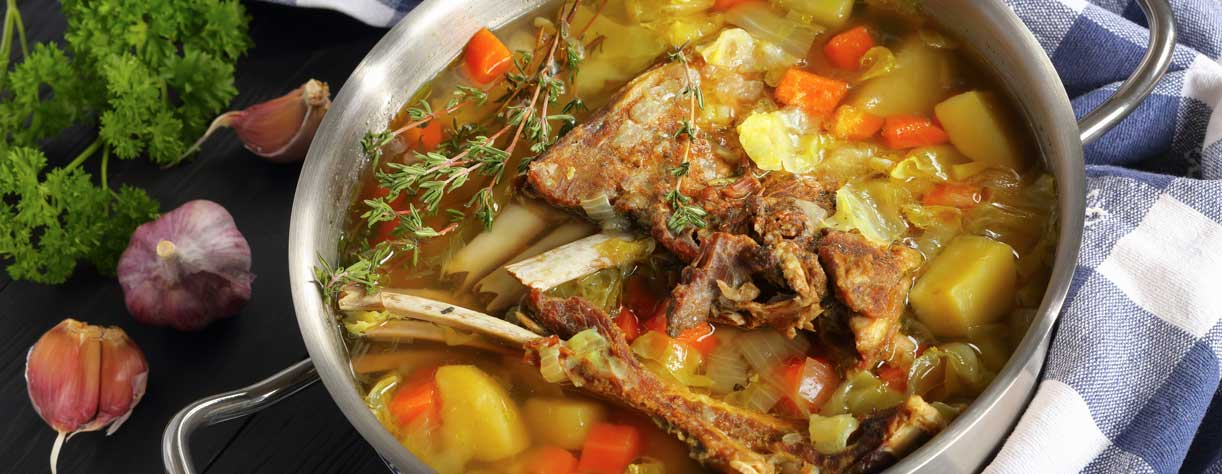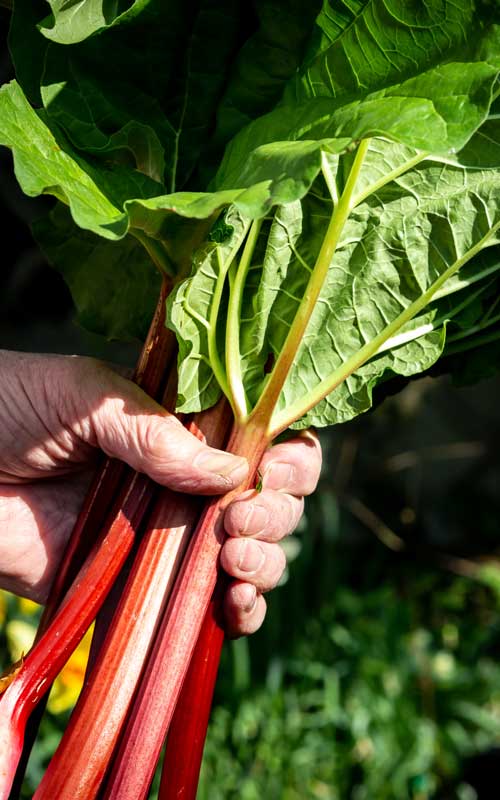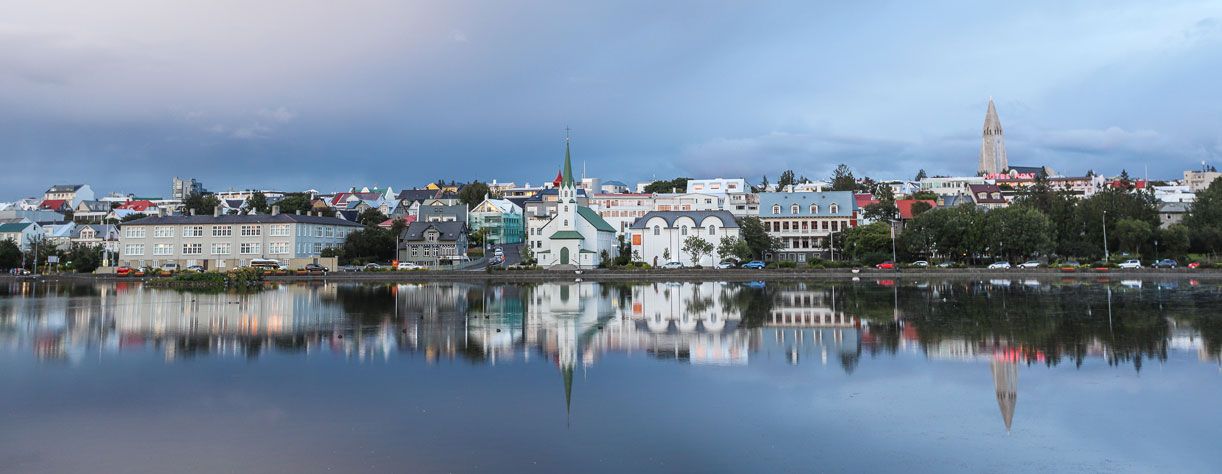What food is eaten in Iceland?
Iceland has a unique place in history. Humans had colonised nearly every corner of the world by about 13,000 years ago. But Iceland remained barely populated until the Viking age, when Norse pioneers settled there. It’s possible a small group of Irish monks beat them to it, but the Norse were the first colonisers on a large scale.
Its description as “the land of ice and fire” is no exaggeration. Among glaciers and freezing winter winds, there are dozens of active volcanoes. It makes for a barren land in terms of large, edible plants or trees.
The birch woodlands that did exist were mostly cut down for timber and to graze sheep. Even today, its entire population is just shy of 380,000, which is less than that of Leicester.
However, the land was not completely devoid of culinary potential …
Natural foods of Iceland
As with most island nations, there’s one abundant source of food for those who know how to exploit it – the sea. The population of Iceland has been sustained for generations on fish, especially cod, herring, halibut and haddock. Sharks are caught and eaten, too.
Langoustines, or Norway lobster, can also be caught off the coast, and have long been a prized seafood, while mussels and scallops are always on the menu too. Whaling has historically played a part in the Icelandic diet, although it remains a controversial topic.
The sea also provides abundant kelp, which the Icelandic people have mastered in the kitchen. It can be eaten as a side, as a salad or in pies and bakes, and gives a hit of umami you’ll never forget.
Back on land, natural food might seem sparse, but there’s a richness of choice to the expert eye. Crowberry is an evergreen shrub that produces small black berries, which often find their way into jams and desserts. Iceland moss is a lichen that can be dried and ground into flour. It’s then used in soups or boiled to make a nutritious jelly. Bilberries are similar to blueberries, can be eaten raw, or used in sauces and preserves.
Even those remaining birch trees are a source of food in Iceland. The leaves are edible, and the sap can be tapped to make a syrup, rather like maple syrup. There’s also a host of herbs that the early settlers would have discovered. Angelica, Arctic thyme and sorrel are all native to here.
Natural foods of Iceland
As with most island nations, there’s one abundant source of food for those who know how to exploit it – the sea. The population of Iceland has been sustained for generations on fish, especially cod, herring, halibut and haddock. Sharks are caught and eaten, too.
Langoustines, or Norway lobster, can also be caught off the coast, and have long been a prized seafood, while mussels and scallops are always on the menu too. Whaling has historically played a part in the Icelandic diet, although it remains a controversial topic.
The sea also provides abundant kelp, which the Icelandic people have mastered in the kitchen. It can be eaten as a side, as a salad or in pies and bakes, and gives a hit of umami you’ll never forget.
Back on land, natural food might seem sparse, but there’s a richness of choice to the expert eye. Crowberry is an evergreen shrub that produces small black berries, which often find their way into jams and desserts. Iceland moss is a lichen that can be dried and ground into flour. It’s then used in soups or boiled to make a nutritious jelly. Bilberries are similar to blueberries, can be eaten raw, or used in sauces and preserves.
Even those remaining birch trees are a source of food in Iceland. The leaves are edible, and the sap can be tapped to make a syrup, rather like maple syrup. There’s also a host of herbs that the early settlers would have discovered. Angelica, Arctic thyme and sorrel are all native to here.
Foods brought by settlers
Sheep were brought very early in Iceland’s history, and they now number more than 400,000. (Yes, that’s more than the country’s human population.) They proved vital for food and wool in the early days, and remain an important part of the economy, cuisine and culture of Iceland. Both mutton and lamb are eaten everywhere. There’s a significant cattle population too, numbering around 30,000, which satisfies the nation’s demand for meat and dairy.
Icelanders love their rhubarb, and it’s grown widely, both commercially in and in gardens. However, it is a relative newcomer, arriving around the beginning of the 20th century. Potatoes are another import that now forms an integral part of the Icelandic diet. They’re eaten much the same as everywhere else – mashed, boiled, baked or as chips.
Classic Icelandic dishes
The indigenous and imported foods listed above might not look like a recipe for culinary wonders, but in the hands of these resourceful, inventive people, a whole genre of foods has developed.
There are definite echoes of the Norse dishes that the first settlers would have brought with them. However, there has since been a thousand years of development in the diet, which has no doubt been helped by the arrival of potatoes and other crops.
Here’s a list of some of the dishes you’ll discover when we dock in Iceland.
- Harðfiskur (pron. harthfiskur): Dried fish, often cod or haddock, eaten as a snack with butter.
- Plokkfiskur: A fish stew made with boiled fish (usually cod or haddock), potatoes, onions, and a white sauce.
- Þorramatur (pron. thorramatur): A traditional platter served during the midwinter festival Þorrablót. Expect various cured and fermented fish and meats.
- Lamb: Icelandic lamb is highly prized for its flavour. As far as we’re concerned, this reputation is well deserved. The flavour no doubt comes from the lambs’ diet of fresh, free-range grasses and herbs in the fields. Roasted lamb (kjötsúpa) and smoked lamb (hangikjöt) are popular ways to prepare it.
- Skyr: A traditional Icelandic dairy product similar to strained yoghurt. It’s very high in protein and is often eaten with fruit or honey.
- Hákarl: Fermented shark, a traditional food preserved by fermentation and drying. Hákarl is known for its strong ammonia smell and robust flavour, so it’s not to everyone’s taste!
- Svið (pron. svith): Boiled sheep’s head, usually served with mashed turnips and potatoes. A similar dish, Smalahove, appeared in our Flavours of Norway article. And again, it’s a demonstration of an unwillingness to waste a single calorie in these harsh environments.
- Rúgbrauð (pron. roogbraith): A dense, dark rye bread. It’s traditionally baked in geothermal heat or steamed, often served with butter or smoked fish.
- Kleinur: Twisted doughnuts, a popular pastry that is deep-fried but not overly sweet, as British or American doughnuts can be.
As you explore the Icelandic waters on your cruise, you might be interested to partake in one of our culinary Signature Experiences. This is where our expert chefs give guests the experience of preparing, cooking and eating local cuisine while you’re on board. They’re incredibly popular, so be sure to check your daily times to see what's cooking when!
Modern Iceland – a true culinary destination
Iceland is rightfully proud of its cuisine. It is the food that helped literally build a nation from the raw gifts of nature. As you explore Reykjavik on your Icelandic stop-off, we’d urge you to seek out these incredible dishes.
There’s no shortage of excellent Italian, Indian, Thai and American restaurants in the city, if that’s more to your taste. But until you’ve buttered and eaten some harðfiskur with friends, you might not fully understand what Icelandic cuisine is all about.






